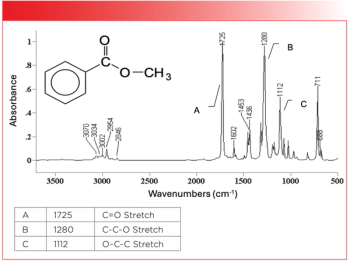Key Points
- Researchers from KU Leuven, Universitas Brawijaya, and Nofima studied Raman and NIR spectroscopy as faster, non-destructive alternatives to traditional halal authentication methods like RT-PCR and LC-MS for detecting pork adulteration in beef meatballs.
- Raman spectroscopy offered higher and more consistent classification accuracy (52.5–85%) than NIR (58.97–75%), particularly in detecting fat and protein-related features.
- Fluorescence interference affected Raman accuracy, and the study recommends using improved equipment and larger sample sets to enhance detection sensitivity.
A recent study explored new screening alternatives to traditional methods for detecting pork adulteration in meatballs. This study, which was published in the journal Spectrochimica Acta Part A: Molecular and Biomolecular Spectroscopy, explored how vibrational spectroscopy techniques are increasingly being used for halal food authentication (1). Led by Zaqlul Iqbal and Wouter Saeys, this study brought together researchers from KU Leuven (Belgium), Universitas Brawijaya (Indonesia), and Nofima AS – Norwegian Institute for Food, Fisheries and Aquaculture Research.
The halal diet is routinely practiced by Muslims, and it encompasses what devout Muslims are allowed to consume, as outlined in the Quran. Halal is an Arabic term that means “lawful,” and some food items that are halal include fruits, vegetables, and grains (2). Foods that are considered haram, which is an Arabic word that mans “forbidden,” include pork, alcoholic beverages, and meat that comes from birds of prey (2).
Therefore, for Muslims to be able to follow their religious beliefs as outlined in the Quran, it is important that the halal dietary laws are followed, which means ensuring food is free from pork and other haram substances. Currently, screening methods for halal compliance rely on analytical techniques such as real-time polymerase chain reaction (RT-PCR), liquid chromatography–mass spectrometry (LC–MS), and gas chromatography–flame ionization detection (GC-FID). Although these methods are highly accurate, they are also time-consuming, expensive, and unsuitable for high-throughput screening (1). With the increasing global demand for halal-certified food, there is an urgent need for faster and more scalable methods to identify potentially adulterated products (1).
In their study, the research team investigated methods that could help resolve these limitations. The research team explored how Raman spectroscopy and NIR spectroscopy can be applied for the rapid and non-destructive detection of pork adulteration in beef meatballs, which is an essential requirement for halal certification in Muslim-majority nations (1).
As part of their experimental procedure, the research team evaluated Raman spectroscopy and NIR spectroscopy as rapid screening tools by preparing various batches of meatballs containing 0%, 3%, 5%, 10%, 50%, and 100% pork (w/w) mixed with beef (1). The meatballs were scanned using Raman spectroscopy in backscattering mode and NIR spectroscopy in reflectance mode, both on intact samples and cross-sectioned (cut) forms (1). These modes mimic real-world conditions in which meatball samples could be analyzed without significant sample preparation.
The Raman spectra exhibited strong peaks at 1657 cm⁻¹, 1443 cm⁻¹, and 1299 cm⁻¹, linked to saturated and unsaturated fats, which are key components in identifying meat composition (1). Meanwhile, the dominant peaks in the NIR spectra at 1457 nm and 1934 nm corresponded to the O–H bonds of water (1). To classify samples based on adulteration levels, the researchers used partial least squares discriminant analysis (PLS-DA) to analyze the spectral fingerprints.
Ultimately, what the researchers discovered was that the cross-sectioned meatballs provided more stable and reliable data than intact ones for both techniques. Raman spectroscopy demonstrated classification accuracies ranging from 52.5% to 85%, whereas NIR spectroscopy showed slightly lower accuracies between 58.97% and 75% (1). Although both methods showed comparable performance, Raman spectroscopy was found to be more consistent and offered deeper insights into the molecular composition of the meat, particularly in identifying fat and protein-related spectral features (1).
One of the key findings in this study was that Raman spectroscopy had a more balanced ability to detect both adulterated and non-adulterated meatballs. Specifically, Raman spectroscopy tended to misclassify meatballs with low levels of adulteration (3–10%), whereas NIR spectroscopy more frequently misclassified samples that were entirely non-adulterated (1). This is a crucial consideration for halal certification, where high sensitivity and specificity are essential to protect consumers and ensure compliance among food producers (1).
In the conclusion of their article, the authors detail some of the challenges encountered in their study. For example, the interference of fluorescence in Raman spectroscopy readings led to weak Raman peaks and increased noise. The researchers suggested that using a higher excitation wavelength laser or fluorescence-suppressing Raman instruments could significantly enhance signal quality and model robustness (1). Looking ahead, the authors also recommend expanding sample sizes and exploring advanced Raman techniques to improve accuracy further.
References
- Iqbal, Z.; Afseth, N. K.; Postelmans, A.; et al. Detection and Quantification of Pork Adulteration in Beef Meatballs with Raman Spectroscopy and Near Infrared Spectroscopy. Spectrochimica Acta Part A: Mol. Biomol. Spectrosc. 2025, 337, 126069. DOI: 10.1016/j.saa.2025.126069
- Halal Foundation Editorial Team, Muslim Dietary Laws & Fasting Practices You Need to Know. American Halal Foundation. Available at: https://halalfoundation.org/muslim-dietary-laws-fasting-practices-you-need-to-know/ (accessed 2025-05-28).






